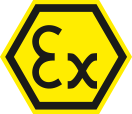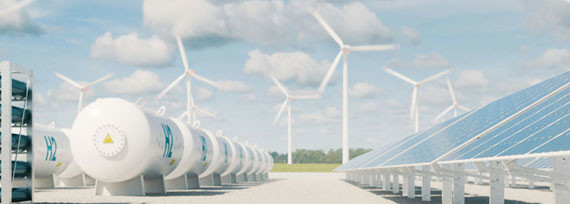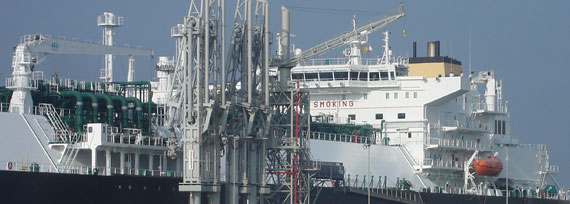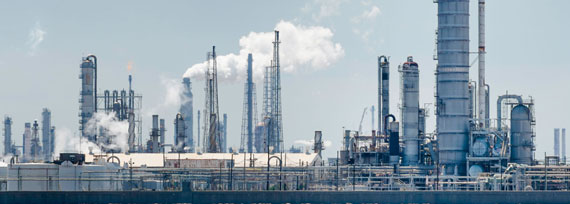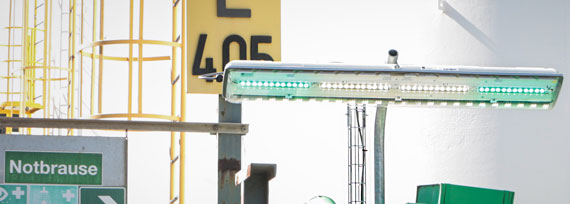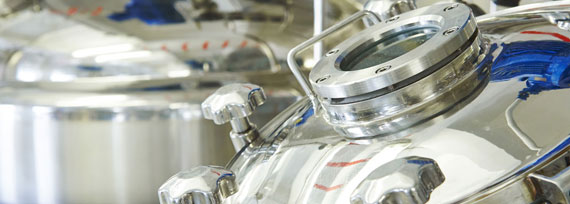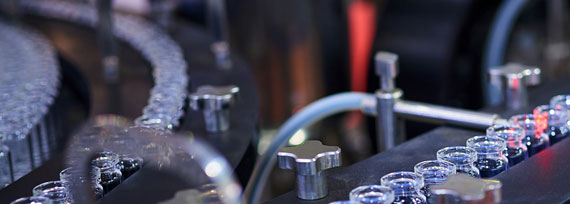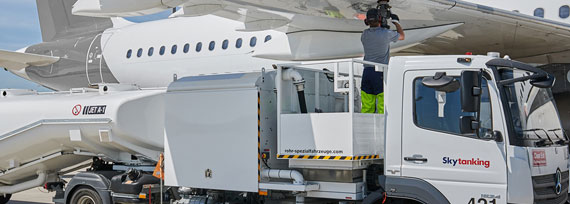DALI Light Management System for Intelligent Lighting
Tested in Weimar, now in operation at the customer: with DALI, all the lights in a factory hall can be automatically operated and monitored.
Let there be light – with DALI
It's almost 6 a.m. at the Frankfurt Höchst industrial park. The early shift at Kuraray Europe GmbH starts in just a few minutes. But the storage building is still in darkness. The ceiling lighting isn't switched on – without a sound – until the staff enter the premises. There's no longer any need to try and find a light switch in the dark and timers are now also a thing of the past – staff can get to work right away here. And when they leave the warehouse at the end of their working day, the ceiling lights are also done for the evening.
This is possible thanks to R. STAHL’s DALI light management system (Digital Addressable Lighting Interface), which automatically operates and checks all the light fittings in an area. In its search for a way to automatically monitor the emergency lighting in the storage building so that it could detect and replace defective lamps more quickly, the specialty chemicals company turned to R. STAHL in February 2024. R. STAHL Application Engineer Dennis Lyskawka, who assists customers with the implementation of lighting solutions, knew right away how to help this customer, who was soon won over by the benefits offered by our system. Especially when they heard that DALI can do more than just check the lighting.
Save electricity – the safe way
The starting situation was simple. "There's not much movement in the new warehouse building at Kuraray," says Dennis Lyskawka. Since there are walls made of a translucent material, like those of a marquee, on all sides, daylight generally provides enough brightness. But the lighting was left switched on all day long and remained at the same level. "So operation without DALI would have a significant impact on the electricity bill," Lyskawka continues. His suggestion was to install a few additional sensors which DALI could use to automatically detect how much light was needed. "The light management system detects when people enter and leave the warehouse, and switches the light fittings on and off automatically as required. The lights are only on when they are needed," explains Dennis Lyskawka.
Correct lighting plays an important role when it comes to safety considerations too. Accidents and injuries are more common at poorly lit workplaces. You could accidentally reach into the wrong shelf, trip over obstacles or fail to see a colleague when you're operating a forklift.
"Daylight harvesting", known as "constant light regulation" in the industry, is a very handy feature. Daylight harvesting means that the system constantly measures how much daylight is present. The lights are made brighter or darker until the perfect level of light is achieved. This is how the specialty chemicals company not only saves electricity but also protects the lamps so that they last much longer. Another bonus: Only one member of staff is needed to monitor the entire lighting system. That sealed the deal: "The customer was on board right away," says Dennis Lyskawka.
Tailored solution – with a tailored service
After Kuraray provided the project team with a floor plan of the hall, they began planning with a detailed lighting calculation. This involved recreating the room using 3D software and simulating the planned lighting. This is important as each space has its own unique conditions. For instance, there is less light in a basement than on the first floor, and more people go into and out of an office building than a storage facility.
Individual questions about safety were also clarified at this stage. "We always discuss the systems together with the customer so that we can meet their requirements exactly as they requested," explains Dennis Lyskawka. Thanks to the lighting calculation, he knew which light fittings should be considered and where they would have to be installed in order to be as efficient as possible. "With this information, my sales colleague Sebastian Franke was able to draw up a quotation. Following this, a few final details were ironed out, some questions were answered and then the quotation was accepted," recalls the project manager. Light fittings and other components were delivered in the weeks that followed. The customer constructed the system themselves – technical sketches made this easy. But afterward, Dennis Lyskawka personally made the trip to Frankfurt to set up the software and put the system into operation. The handover to Kuraray finally took place in March 2025.

